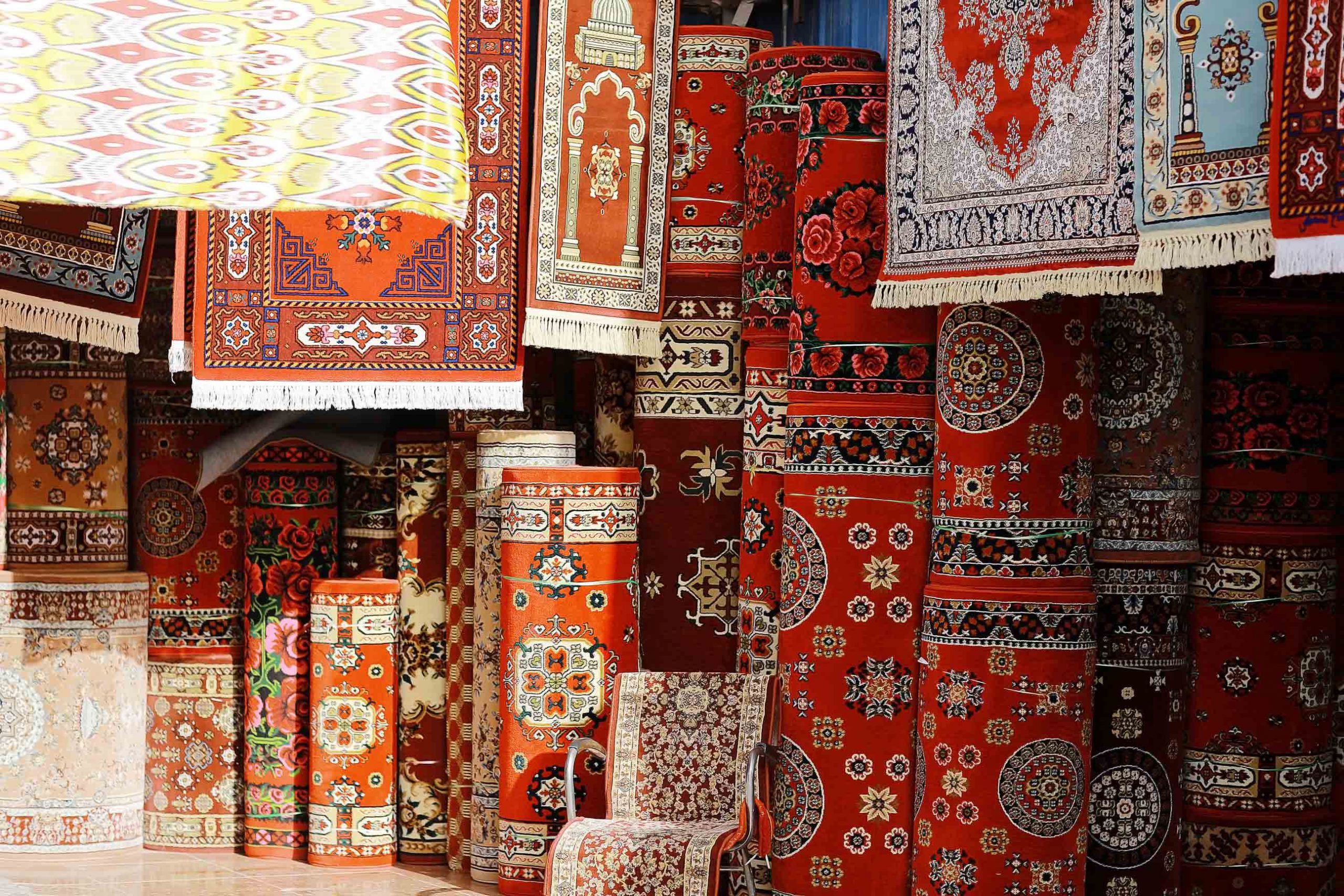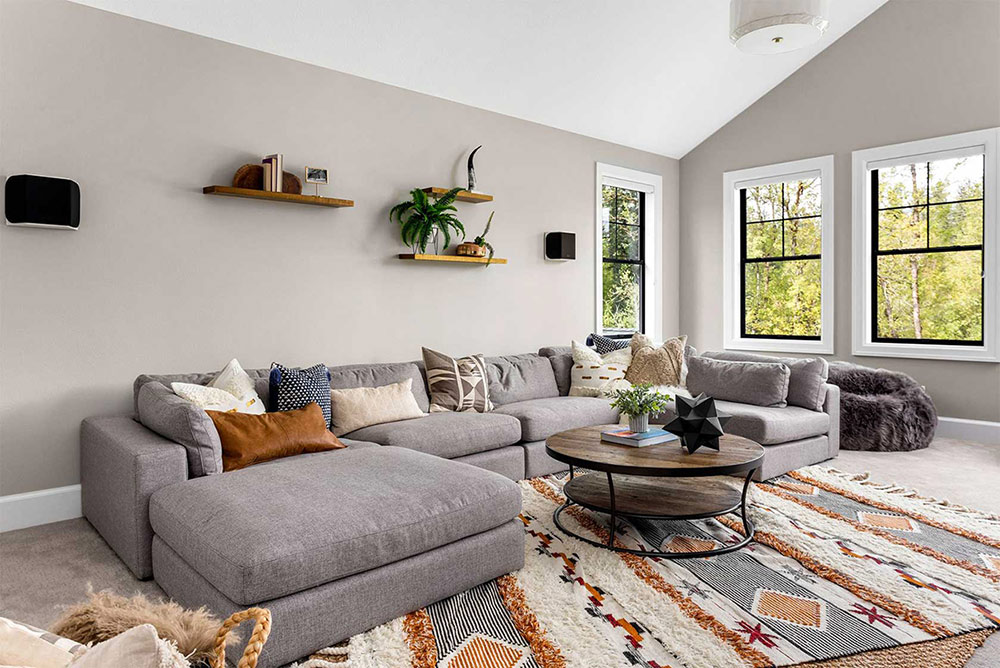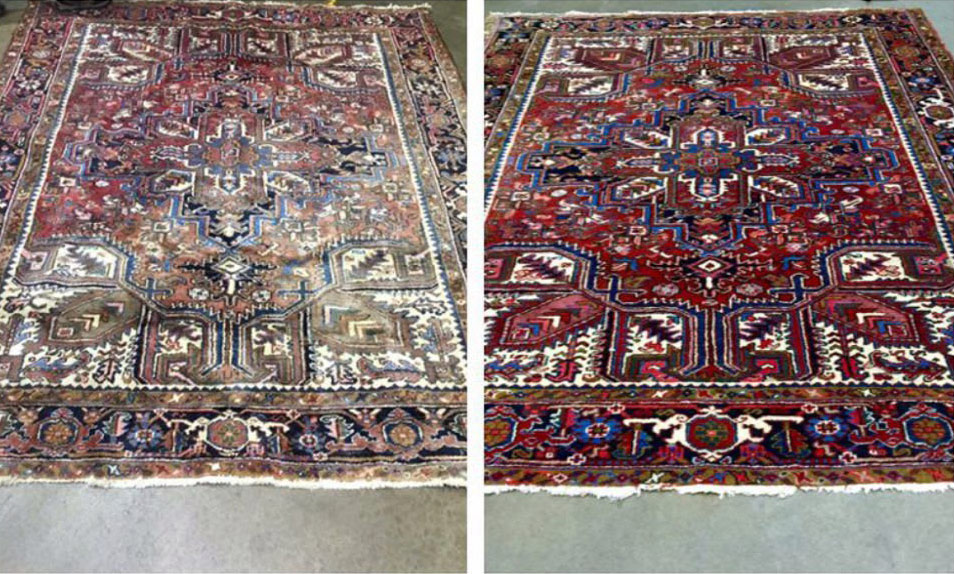Many people use the terms Persian Rug and Oriental Rug interchangeably, but this is incorrect. Oriental Rug is a broader category comprised of any hand-knotted rug made in Asia. Persian Rugs fall under the umbrella of oriental rugs, but due to their popularity, the unique knot used in their production, and their specific country of origin, they are often separated into their own category.
What is an Oriental Rug?
Simply put, an oriental rug is any carpet hand-knotted in Asia.
Usually, these rugs come from Iran, China, India, Russia, Turkey, Pakistan, and Tibet. After China’s emergence as an exporter, it soon became one of the top sources for oriental rugs. China has a centuries long cultural history of carpet-weaving, but only recently have its rugs been discovered by the outside world. Due to this discovery, the manufacturing process changed, allowing for faster and cheaper production, spreading chinese oriental rugs to consumers around the world.
 All oriental rugs are woven by hand using a loom. Strings of yarn are painstakingly knotted into the weave to create the ornate designs. Oriental rugs usually use the symmetrical Turkish (or Ghiordes) Knot.
All oriental rugs are woven by hand using a loom. Strings of yarn are painstakingly knotted into the weave to create the ornate designs. Oriental rugs usually use the symmetrical Turkish (or Ghiordes) Knot.
While modern technology has largely mechanized the process of making and dying the yarn, all true Oriental (and Persian) rugs are hand woven and knotted. This attention to detail is where the value and rarity of these rugs comes from, as each rug is unique and takes many hours of hard work to create.
Oriental rugs are generally made from wool, but other materials including silk and bamboo are sometimes used as well. Many oriental rugs are decorated with symbols and designs whose meanings reflect the cultures in which they are made. These tend to be geometric shapes, animals, landscapes, and floral patterns. Many Oriental rugs use contrasting colors, as well as different textures to create three-dimensional effects.
What is a Persian Rug?
A Persian Rug is a carpet hand-knotted in Iran. Due to their popularity, unique features, and prevalence, Persian rugs are generally placed in their own category under the umbrella of oriental rugs.
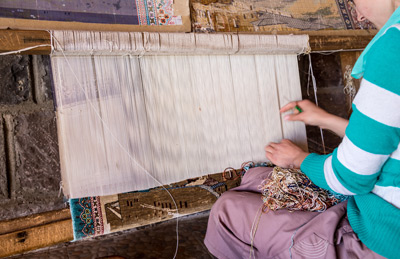 The art of hand weaving was invented in Persia, and it remains highly traditional. Techniques are carefully passed down generation to generation, some dating back many hundreds of years. Some types of Persian rugs are named after the region, city, or tribe of their origin. Some cities and regions have their own distinctive styles or techniques with long histories. Due to this, Persian rugs tend to tell a lot about themselves by their pattern and the way they are made.
The art of hand weaving was invented in Persia, and it remains highly traditional. Techniques are carefully passed down generation to generation, some dating back many hundreds of years. Some types of Persian rugs are named after the region, city, or tribe of their origin. Some cities and regions have their own distinctive styles or techniques with long histories. Due to this, Persian rugs tend to tell a lot about themselves by their pattern and the way they are made.
The oldest surviving carpet in the world is Persian and dates back to approximately 2400 years ago. Historical records suggest that carpets have been being made in Persia for even longer.
Some of the most intricate rug designs come from Persia. Two of the most common designs are the all-over and central medallion patterns. The all-over pattern is a repeating geometric or floral pattern that repeats over the rug. The central medallion pattern is a circular or oval pattern in the center, often a geometric shape. In addition to their unique designs, Persian rugs are typically woven using the Persian Knot, a special asymmetrical knotting technique.
Persian rugs are often highly prized for their intricacy, quality, and high knot count, with some having as many as 500 knots per square inch. Since 1987 U.S. trade sanctions on Iran have prevented the import of Persian rugs. This has created a market for fake Persian rugs and substantially raised the value of rugs imported before the sanctions. Like all oriental rugs, Persian rugs are painstakingly hand-made by skilled artisans. Everywhere in the world, quality Persian rugs are prized and fetch very high prices even compared to oriental rugs from other countries.
Tips for Cleaning and Caring for your Oriental or Persian Rug:
Avoid Sunlight
Sunlight is the number one enemy of hand-knotted rugs. Sunlight will cause the rug to fade, and will dry the oils from the fibers, causing them to become brittle and easily damaged. Rugs that receive any amount of sunlight should be frequently monitored to ensure that any damage is caught early. If the sun damage has not yet reached beyond the edges of the piles, a professional oriental rug cleaning may be enough to save the rug from permanent harm.
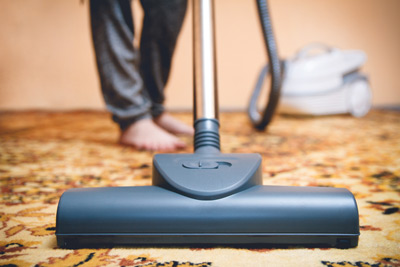 Rotate Often
Rotate Often
Rugs will wear naturally with use. To ensure they wear evenly and last for many years, they should be periodically turned and flipped to ensure that the same parts of the rug don’t experience higher levels of foot traffic.
Gently Vacuum or Sweep
Dirty rugs wear out much faster, making frequent cleaning a necessity. Rugs should be vacuumed regularly using suction only. No roller brushes, as these may pull out fibers, or otherwise damage the rug. Gently sweeping the rug out can also remove dust and debris. Oriental and Persian rugs should never be beaten or shaken out.
Protect When Storing
When a rug is in use, moths are rarely a threat. But when storing your Oriental or Persian Rug, be careful to take proper precautions in order to avoid damage from moths. Start by cleaning the rug, then roll it with moth balls placed throughout before double or triple bagging the rug in garbage bags and sealing. This will kill all moth larvae and prevent more from entering the rug.
Get your Oriental and Persian Rugs Cleaned Professionally
Everyone should have their Persian and Oriental rugs professionally cleaned periodically. This will greatly extend the life of your rug, and help keep its colors vibrant. Professional cleaners are experts in making sure the color and integrity of your rug are maintained. Deep cleaning your rug at home can lead to staining, loss of color, and damage to the rug fiber.
Oriental and Persian rugs are investments, as they increase in value as they age, and with proper care, any hand-knotted rug can last many decades. At Alexander’s Rug Care we specialize in cleaning, repairing, and protecting your rugs.
